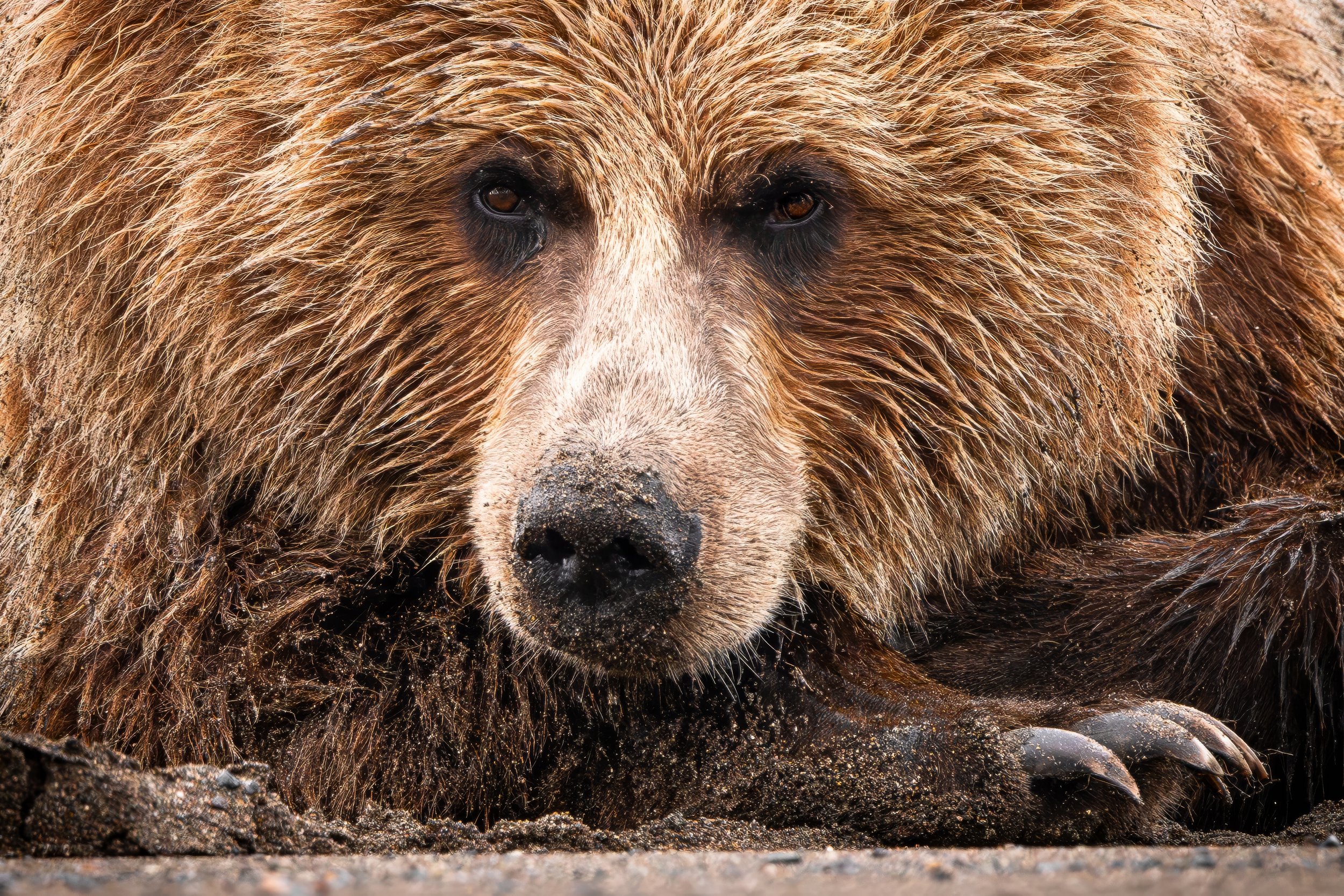OUR
STORY
This adorable critter is called an Ermine, or as others might know, a Stout in the summer. The reason for the different names correlates to the change in their fur during the seasons. In the warmer months of the year, the Stout has brown fur with a white belly; then during the colder months, when it begins to snow, they turn white to blend in with the snow and take on the name Ermine.
I spotted the Ermine pretty easily on my way back from a hike looking for other wildlife. We didn’t have a lot of snow this winter, so unfortunately, his camouflage was working against them. Ermines are very elusive and quick-moving critters but are yet very curious by nature. Watching from a distance, I snapped this picture of what I can only think was his home that he was peering out of. A few days later, I returned to the same area during the snowfall and noticed tracks leading in and out of several holes in a fallen tree. I waited patiently for several hours a day for a few days following the encounter but had no luck. Still, I’m more than satisfied with my initial encounter. So until the next time, Ermine.
THE GHOST
RUST BENEATH THE SUN
I started taking pictures of wildlife in Pennsylvania, which, yes, does have wildlife in its forests. Today, we're looking at a fox, which was one of my first real challenges to photograph. Talk about trial and error—I’d say it took me about a year and a half to finally get a picture of a fox that wasn’t either running away from me or shot in pitch-black conditions. This might be because they can hear a mouse squeak from 100 feet away, but let’s pretend I’m quieter than that.
Now, maybe waiting a year and a half is worth it for a shot like this, as the lighting was just perfectly breaking through the clouds. Over the course of a few weeks, I watched what looked to me like a young male hunt the grasslands as well as scavenge material for shelter, which they were insulating during the winter months. Fox dens can create biogeochemical hotspots, which are areas of lush vegetation in nutrient-poor environments like in the Arctic tundra.
I can’t wait to get back to follow up and see if it may even have a kits, which would be great for the ecosystem. Foxes play an important role in aiding plant distribution and regeneration through seed dispersal left behind in their droppings.
STONE PAW
My first time seeing brown bears out in the wild was incredible, to say the least, especially making eye contact with such gorgeous animals. This is a female coastal brown bear weighing around 600 pounds, who in this picture is laying down in the sand after spending the morning digging for razor clams. I got to spend quite some time with her as she curiously watched us before finally dozing off for her afternoon nap.
Coastal brown bears have an abundance of resources, which causes these brown bears to be bigger in size than interior grizzlies that don’t have such an easy food source. Coastal brown bears can consume up to 100,000 calories a day, and 45,000 of that 100,000 could be sedge grass, which is nutrient-dense and high in protein. This helps enrich soil and supports plant growth by fertilizing the ground with seeds, carrion and nutrients through their scat. Bears are also an umbrella species, by protecting them you also safeguard the habitats of numerous other species that share the same place.
At no time did I feel threatened or fearful, as we are simply not a food source to them especially if you respect the wildlife they will respect you.
“An animal eyes have the power to speak a great language” -Martin Buber
KING FISHER
Let's start off by saying that kingfishers are my favorite bird, and to be more specific, the belted kingfisher is the one I admire most, mainly because it has presented me with a few challenges over the years. This image shows two kingfishers, with the male perched on a branch and the female flying underneath him. It is one of my favorite images I've captured of kingfishers. As you can see, it’s not perfect—but it’s not meant to be. After many missed moments and blurry shots, I grew frustrated that I wasn’t able to capture at least what seemed in my eyes a decent image. Then I realized I was focusing too much on taking a perfect picture and losing sight of the subject itself. Wildlife photography isn’t about snapping a cool photo, it’s about showcasing these beautiful creatures and sharing unique moments to raise awareness especially if small changes can make a difference. Kingfishers are sensitive indicators of pollution and habitat degradation. They live in many parts of the world, so if they're absent from your area, there is likely an underlying environmental issue. They rely on healthy aquatic ecosystems with clean water and abundant prey. As predators, kingfishers play a vital role in maintaining population balance, feeding on a wide variety of aquatic life and crustaceans. Their presence is not only a sign of ecosystem health but also a reminder of our responsibility to protect natural habitats.








